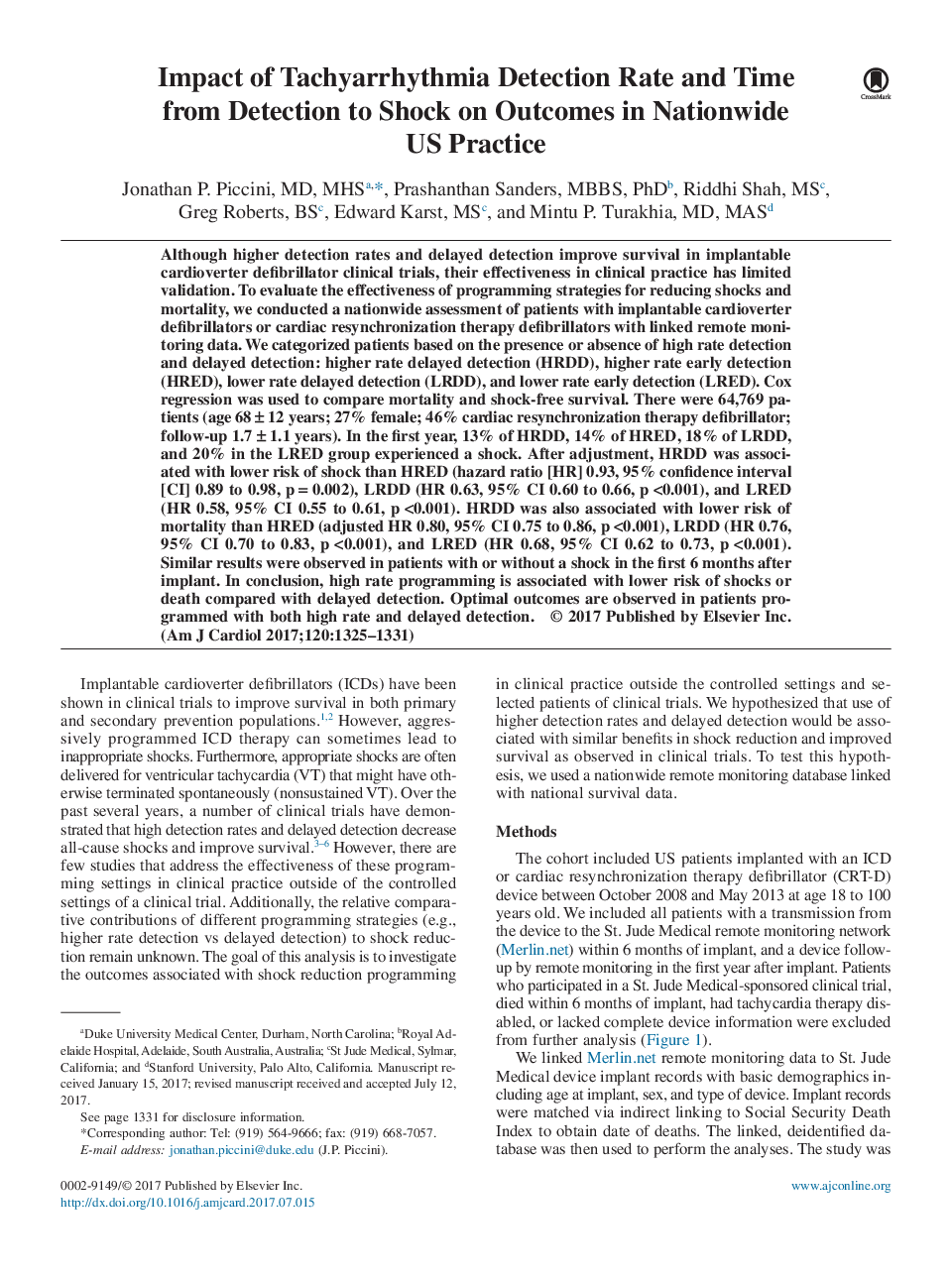| کد مقاله | کد نشریه | سال انتشار | مقاله انگلیسی | نسخه تمام متن |
|---|---|---|---|---|
| 5594644 | 1572075 | 2017 | 7 صفحه PDF | دانلود رایگان |
عنوان انگلیسی مقاله ISI
Impact of Tachyarrhythmia Detection Rate and Time from Detection to Shock on Outcomes in Nationwide US Practice
ترجمه فارسی عنوان
تأثیر میزان تشخیص تاکیراتیتی و زمان تشخیص تا شوک بر نتایج در سراسر کشور در ایالات متحده
دانلود مقاله + سفارش ترجمه
دانلود مقاله ISI انگلیسی
رایگان برای ایرانیان
موضوعات مرتبط
علوم پزشکی و سلامت
پزشکی و دندانپزشکی
کاردیولوژی و پزشکی قلب و عروق
چکیده انگلیسی
Although higher detection rates and delayed detection improve survival in implantable cardioverter defibrillator clinical trials, their effectiveness in clinical practice has limited validation. To evaluate the effectiveness of programming strategies for reducing shocks and mortality, we conducted a nationwide assessment of patients with implantable cardioverter defibrillators or cardiac resynchronization therapy defibrillators with linked remote monitoring data. We categorized patients based on the presence or absence of high rate detection and delayed detection: higher rate delayed detection (HRDD), higher rate early detection (HRED), lower rate delayed detection (LRDD), and lower rate early detection (LRED). Cox regression was used to compare mortality and shock-free survival. There were 64,769 patients (age 68â±â12 years; 27% female; 46% cardiac resynchronization therapy defibrillator; follow-up 1.7â±â1.1 years). In the first year, 13% of HRDD, 14% of HRED, 18% of LRDD, and 20% in the LRED group experienced a shock. After adjustment, HRDD was associated with lower risk of shock than HRED (hazard ratio [HR] 0.93, 95% confidence interval [CI] 0.89 to 0.98, pâ=â0.002), LRDD (HR 0.63, 95% CI 0.60 to 0.66, pâ<0.001), and LRED (HR 0.58, 95% CI 0.55 to 0.61, pâ<0.001). HRDD was also associated with lower risk of mortality than HRED (adjusted HR 0.80, 95% CI 0.75 to 0.86, pâ<0.001), LRDD (HR 0.76, 95% CI 0.70 to 0.83, pâ<0.001), and LRED (HR 0.68, 95% CI 0.62 to 0.73, pâ<0.001). Similar results were observed in patients with or without a shock in the first 6 months after implant. In conclusion, high rate programming is associated with lower risk of shocks or death compared with delayed detection. Optimal outcomes are observed in patients programmed with both high rate and delayed detection.
ناشر
Database: Elsevier - ScienceDirect (ساینس دایرکت)
Journal: The American Journal of Cardiology - Volume 120, Issue 8, 15 October 2017, Pages 1325-1331
Journal: The American Journal of Cardiology - Volume 120, Issue 8, 15 October 2017, Pages 1325-1331
نویسندگان
Jonathan P. MD, MHS, Prashanthan MBBS, PhD, Riddhi MS, Greg BS, Edward MS, Mintu P. MD, MAS,
